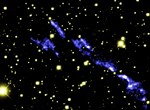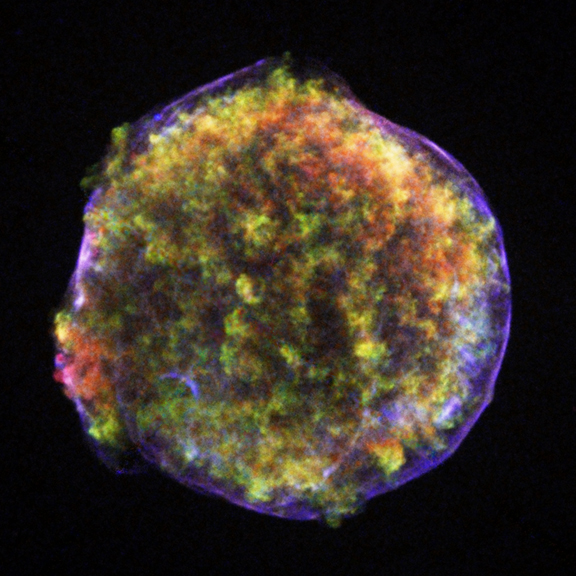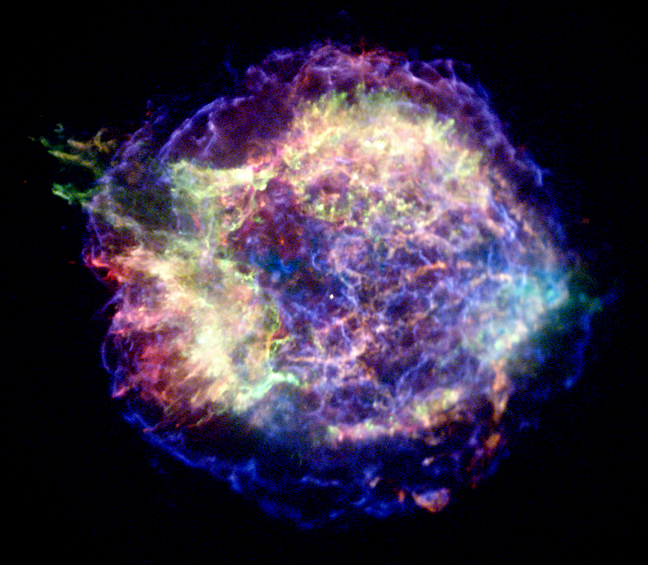Image List
-

As light from the Tycho supernova travels through space, a fraction of it hits dust and is reflected in our direction as a "light echo" (purple). As the light hits different sections of dust, the echo appears to travel across the sky. Each frame of this movie is a photograph taken several months apart. The movie as a whole covers about a year of observations.
A. Rest et al. -

In 1572, the Danish astronomer Tycho Brahe observed and studied the explosion of a star that became known as Tycho's supernova. More than four centuries later, Chandra's X-ray photograph of the supernova remnant shows an expanding bubble of multimillion degree debris (green and red) inside a more rapidly moving shell of extremely high energy electrons (filamentary blue). Astronomers have detected a light echo from this supernova, meaning they can see the light from the explosion itself 400 years later.
NASA/CXC/Rutgers/J.Warren & J.Hughes et al. -

This Chandra X-ray photograph shows Cassiopeia A (Cas A, for short), the youngest supernova remnant in the Milky Way. New analysis shows that this supernova remnant acts like a relativistic pinball machine by accelerating electrons to enormous energies. The blue, wispy arcs in the image show where the acceleration is taking place in an expanding shock wave generated by the explosion. The red and green regions show material from the destroyed star that has been heated to millions of degrees by the explosion. Although observers at the time didn't notice this supernova, astronomers today have detected its light echoing through the galaxy 400 years after the fact.
NASA/CXC/MIT/UMass Amherst/M.D.Stage et al.